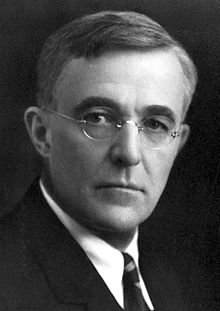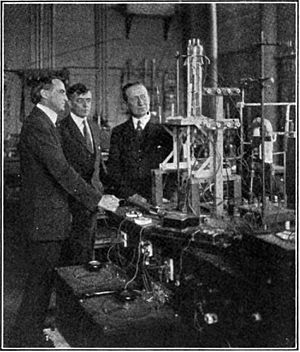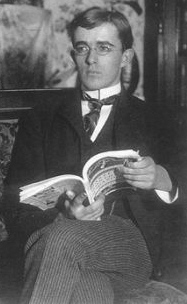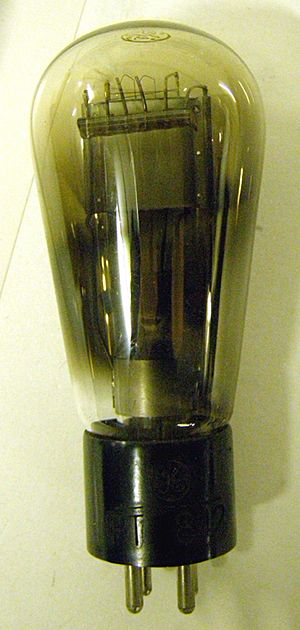Irving Langmuir facts for kids
Quick facts for kids
Irving Langmuir
|
|
|---|---|

Langmuir in 1932
|
|
| Born | January 31, 1881 |
| Died | August 16, 1957 (aged 76) |
| Nationality | American |
| Alma mater | Columbia University University of Göttingen |
| Known for | Inventor of the high-vacuum tube Langmuir isotherm Langmuir waves |
| Awards |
|
| Scientific career | |
| Fields | Chemistry, physics |
| Institutions | Stevens Institute of Technology General Electric |
| Doctoral advisor | Friedrich Dolezalek |
| Other academic advisors | Walther Nernst |
Irving Langmuir (pronounced LANG-myoor; born January 31, 1881 – died August 16, 1957) was an American chemist, physicist, and engineer. He won the Nobel Prize in Chemistry in 1932. This award was for his important work in surface chemistry, which is the study of what happens at the edges of materials.
While working at General Electric from 1909 to 1950, Langmuir made many breakthroughs. He invented the gas-filled incandescent lamp and the atomic hydrogen welding technique. He also helped develop the "concentric theory of atomic structure," which explains how electrons are arranged in atoms. A science journal about surfaces, called Langmuir, is named after him. The Langmuir Laboratory for Atmospheric Research in New Mexico also honors his name.
Contents
About Irving Langmuir
Early Life and Interests
Irving Langmuir was born in Brooklyn, New York, on January 31, 1881. He was one of four children. As a child, his parents encouraged him to observe nature closely. They also told him to keep detailed notes of what he saw.
When Irving was eleven, doctors found he had poor eyesight. Once this was corrected, he could see many details he had missed before. This made him even more interested in the complex world around him.
His older brother, Arthur Langmuir, who was a research chemist, also inspired him. Arthur helped Irving set up his first chemistry lab in his bedroom. He patiently answered all of Irving's many questions. Langmuir enjoyed mountaineering, skiing, and flying his own plane. He also loved classical music. Besides his science work, he cared deeply about protecting wilderness areas.
Education and Early Career
Langmuir went to schools in America and Paris. He graduated from Chestnut Hill Academy in 1898. In 1903, he earned a Bachelor of Science degree in metallurgical engineering from Columbia University.
He then went to Göttingen, Germany, where he earned his PhD in 1906. His research there involved an electric lamp invented by Walther Nernst. After his PhD, Langmuir taught at Stevens Institute of Technology in New Jersey. In 1909, he joined the General Electric research laboratory in Schenectady, New York.
Key Discoveries and Research

Langmuir's first big scientific contributions came from studying light bulbs. He improved the diffusion pump, which led to better vacuum tubes for rectifiers and amplifiers. He and his colleague, Lewi Tonks, found that filling a light bulb with an inert gas like argon made the tungsten filament last much longer. The key was keeping everything extremely clean. He also discovered that twisting the filament into a tight coil made it work better. These were major steps forward for the incandescent light bulb.
His work on surfaces began when he found that hydrogen gas in a tungsten-filament bulb would break into single atoms. These atoms would then form a layer just one atom thick on the bulb's surface.
Langmuir also studied how charged particles are released from hot wires. He was one of the first scientists to work with plasma, which is an ionized gas. He was the first to call it "plasma" because it reminded him of blood plasma. Langmuir and Tonks discovered waves in plasmas, now called Langmuir waves.
In 1924, he invented a way to measure the temperature and density of plasma using a special probe. This is now known as a Langmuir probe. He also discovered atomic hydrogen, which he used to invent atomic hydrogen welding. This was the first type of plasma welding ever created.
In 1917, Langmuir published a paper about oil films. This work later helped him win the Nobel Prize. He suggested that oil molecules on water form a single layer. One end of the molecule, which likes water (hydrophilic), points down into the water. The other end, which dislikes water (hydrophobic), sticks up. By knowing the oil's volume and the film's area, he could figure out the size of the molecules.
Later Work and Honors
After World War I, Langmuir helped us understand atoms better. He explained the modern idea of valence shells (the outer layers of electrons) and isotopes (atoms of the same element with different numbers of neutrons).
In 1923, he became president of the Institute of Radio Engineers. He also worked with Katharine Burr Blodgett to study very thin films. They introduced the idea of a monolayer, which is a layer only one molecule thick. In 1932, he received the Nobel Prize in Chemistry for his discoveries in surface chemistry.
In 1938, Langmuir became interested in atmospheric science and meteorology. He famously disproved a claim that a certain fly could fly at over 800 miles per hour. Langmuir calculated its speed was closer to 25 miles per hour. He also discovered a wind-driven circulation pattern in the ocean, now called the Langmuir circulation.
During World War II, Langmuir helped improve sonar for finding submarines. He also worked on smoke screens and ways to de-ice aircraft wings. This research led him to develop cloud seeding. He showed that adding ice particles (like dry ice or silver iodide) to cold, moist clouds could make it rain or snow. This technique is still used today, though its effectiveness is sometimes debated.
In 1953, Langmuir created the term "pathological science". This describes research that seems scientific but is influenced by unconscious bias. He used ESP and flying saucers as examples.
Langmuir's house in Schenectady, New York, was named a National Historic Landmark in 1976.
Personal Life
Irving Langmuir married Marion Mersereau in 1912. They adopted two children, Kenneth and Barbara. He passed away from a heart attack on August 16, 1957, in Woods Hole, Massachusetts. His obituary was on the front page of The New York Times. Langmuir was an agnostic, meaning he was unsure about the existence of God.
In Popular Culture
The author Kurt Vonnegut said that Langmuir inspired the scientist character Dr. Felix Hoenikker in his novel Cat's Cradle. In the book, Dr. Hoenikker invents "ice-nine," which accidentally destroys the world. Langmuir had worked with Vonnegut's brother, Bernard Vonnegut, at General Electric on experiments with ice crystals.
Awards and Recognition
- Fellow of the American Academy of Arts and Sciences (1918)
- Perkin Medal (1928)
- Nobel Prize in Chemistry (1932)
- Franklin Medal (1934)
- Faraday Medal (1944)
- John J. Carty Award of the National Academy of Sciences (1950)
- Mount Langmuir (elevation 8022 ft / 2445m) in Alaska is named after him.
- Langmuir College at Stony Brook University was named for him in 1970.
- His grandson, Roger R Summerhayes, made a documentary in 1999 called Langmuir's World.
Patents
- Langmuir, U.S. Patent 1,180,159, "Incandescent Electric Lamp"
- Langmuir, U.S. Patent 1,244,217, "Electron-discharge apparatus and method of operating the same"
- Langmuir, U.S. Patent 1,251,388, "Method of and apparatus for controlling x-ray tubes"
See also
 In Spanish: Irving Langmuir para niños
In Spanish: Irving Langmuir para niños
- 18-electron rule
- Irving Langmuir House
- Langmuir isotherm
- Langmuir trough
- Langmuir equation, a formula that describes how molecules stick to a surface
- Langmuir wave, a fast vibration of electrons in materials like plasmas
- Langmuir states, special quantum states of Helium atoms
- Langmuir–Blodgett film
- Child–Langmuir law
- Langmuir–Taylor detector
- List of things named after Irving Langmuir



